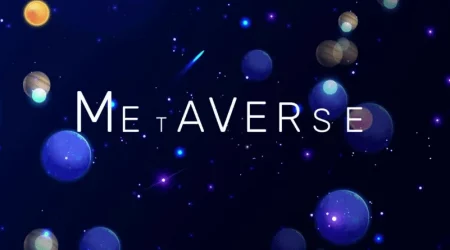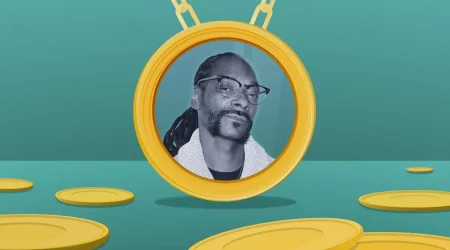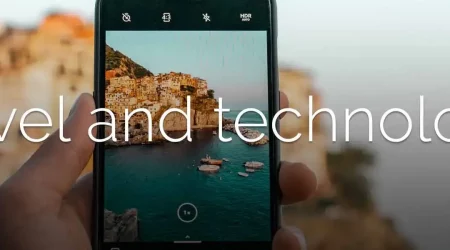How Does an Online Metaverse Look Like?
Table of Contents
How Does an Online Metaverse Look Like?
This article will talk about Second Life, Microsoft Mesh, Roblox, and Horizon Worlds. We’ll also look at Microsoft’s latest efforts in this space, like Horizon Worlds. The goal is to give you an overview of how these virtual worlds work.
PlayStation Home, the OASIS, and Horizon Worlds are just a few examples. If you’re interested in learning more about these worlds, read on! Is a virtual world suitable for you? Here are some things to think about before jumping in. Firstly, it’s essential to understand what an online metaverse is. A metaverse is a virtual world where you can live a virtual life. It’s a virtual environment where you can be anyone you want.
There are several examples in video games, such as Minecraft and Roblox. These video games are similar to the broader metaverse in that they enable players to interact with each other, complete tasks together, and help shape the world. In some games, such as World of Warcraft, players can create their virtual worlds, which they can visit only if another player invites them.
Horizon Worlds
Despite the lack of a fully fleshed-out metaverse, Horizon Worlds still offers some exciting and immersive activities. Users can create their worlds, participate in group hangouts, play games, and see pre-recorded VR events. In addition to various games and activities, users can also participate in a trophy room and gesticulate using their actual fingers. Although this is still a work in progress, the potential for this virtual world is significant.
While Horizon Worlds may not be a metaverse, the company does see it as the next big thing. Some critics of the company’s concept view it as the successor to the mobile internet. But its CEO says that it’s more than just a virtual world. The company has also begun developing a mobile version. As such, more people will likely have a chance to experience Horizon Worlds.
In an online metaverse, you can create your virtual world. Horizon Worlds lets you create your avatar and play games in it. You can also follow other users and become their favorite creators. You can use social networking sites such as Facebook to share your creations. However, it would help if you were 18 years old to participate. To get started, download the Horizon Worlds application from the App Store or Google Play.
One of the main benefits of playing Horizon Worlds is its social aspect. You can meet other users, play games, and test your imagination. You can also take selfies and play different types of games in this digital world. Once you have joined the community, you can explore your new world! The game is free, and you can play it for free or for a fee. The fun doesn’t stop there. You can also earn trophies for participating in games.
Second Life
How Second Life’s online metaverse looks is an interesting question to ask. While the site has been around for some time, its nascent community has only recently come of age. Its founders, Philip Rosedale and Chris Metzen, initially planned to use the platform to create a virtual “alternative reality” for users. The underlying grid enables users to socialize and interact in the virtual world and trade in digital property. Since its initial launch, companies like Facebook and Linden Lab have popped up to offer the same experience.
Some have speculated that people will not buy goods they can’t use in the real world. Interestingly, this notion has proven to be a myth. In the first decade of Second Life, users spent $3.2 billion buying virtual goods in-world. The virtual marketplace, also known as the “second life economy,” was the first to introduce NFTs. Designers could make unique dresses for virtual ballrooms.
Linden Lab launched the virtual world in 2003, and it quickly became a popular place for severe entities to purchase islands. The Harvard Berkman Center for Internet and Society, for example, had an island. Users had to be patient and have a powerful computer to participate in the world. Those who envisioned an emotional system were among the first to purchase islands.
Linden Lab, the company behind Second Life, has had several leaders. Its founder Philip Rosedale started the company during the dot-com boom and launched the virtual world in 2003. Rosedale was the first CEO but stepped down from the company in 2008 and then went through a string of caretaker CEOs. Linden Lab’s CEO has been fired four times since, and it has never really regained its luster.
PlayStation Home
PlayStation Home is an example of an online meta-verse. The game was a community-based social network and more like a life sim than a traditional MMO. Players were virtual avatars with customizable apartments. These virtual homes could be public or private, with different features available to each user. Interestingly, Red Bull was one of the companies that sponsored PlayStation Home, and it was the first major brand to do so.
The PlayStation Home, an online social hub for the PlayStation 3, came out in 2008 and closed down in 2015. It was a disappointing failure, and its end date isn’t precise, but it’s a case study in the metaverse and its potential for future development. While it had the potential to be a highly developed and engaging experience, PlayStation Home fell flat compared to more sophisticated virtual worlds.
The concept of a virtual community has been around for quite some time, and it grew in popularity with each passing year—over 41 million registered accounts on the game, which is a massive number for a new game. The PlayStation Home virtual world allowed players to freely roam the game’s virtual world, interact with other users, and consume content. Sony has recently renewed the trademark for the game name, and the game has become an online destination for players.
Read More: How to Get Involved With the Metaverse
OASIS is an online metaverse
As a player of OASIS, you can create your universe. The virtual universe is split into 27 sectors that span ten light hours. Within these sectors, there are various rules and zones. For instance, one zone may be no-PvP while another may be a thriving, bustling metropolis. You can even build your planet and invite others to join you. As you progress through the game, you will encounter powerful artifacts, which you can use to improve your character’s attributes.
In 1992, Neal Stephenson first used the term “metaverse” in his hit sci-fi novel Snow Crash, which revolved around a man’s quest to survive in an online virtual fantasy universe. This idea was later updated in his 2007 novel, Ready Player One, which inspired the launch of Facebook’s Oculus Rift. In 2012, Linden Lab released Second Life, a virtual world that attracted record labels, car manufacturers, and other significant players. CNET even set up a virtual presence there. Though it has declined in recent years, the game remains active today.
Roblox
The company that created the popular online shooting game Fortnite also has its sights set on establishing its metaverse. Roblox has held virtual concerts featuring Lil Nas X and Travis Scott, and it recently hosted a Star Wars video. Microsoft bought the maker of Minecraft for $2.5 billion in 2014.
The company has already partnered with major brands and sports teams. Roblox has 31 million active users, including millions of developers who earn a living solely from creating games for the platform. Neil Rimer, a co-founder of Index Ventures, which owns more than 10% of Roblox Class A shares, said users would provide the energy that fuels the metaverse. Despite the hype, Rimer emphasized that the game’s success will come from its users.
Many Gen Z users enjoy generating virtual worlds, and Roblox enables this. Its metaverse offers many experiences, from complex fighting games to simple virtual living rooms. The Hilton Hotels group is also making an appearance in the game. This is just a sneak preview of the online metaverse, but it could be the stepping stone toward a new generation of gamers. There are still a lot of challenges ahead for Roblox, but it’s a good start for Gen Z, who grew up in a time of financial crisis.







Leave a Reply